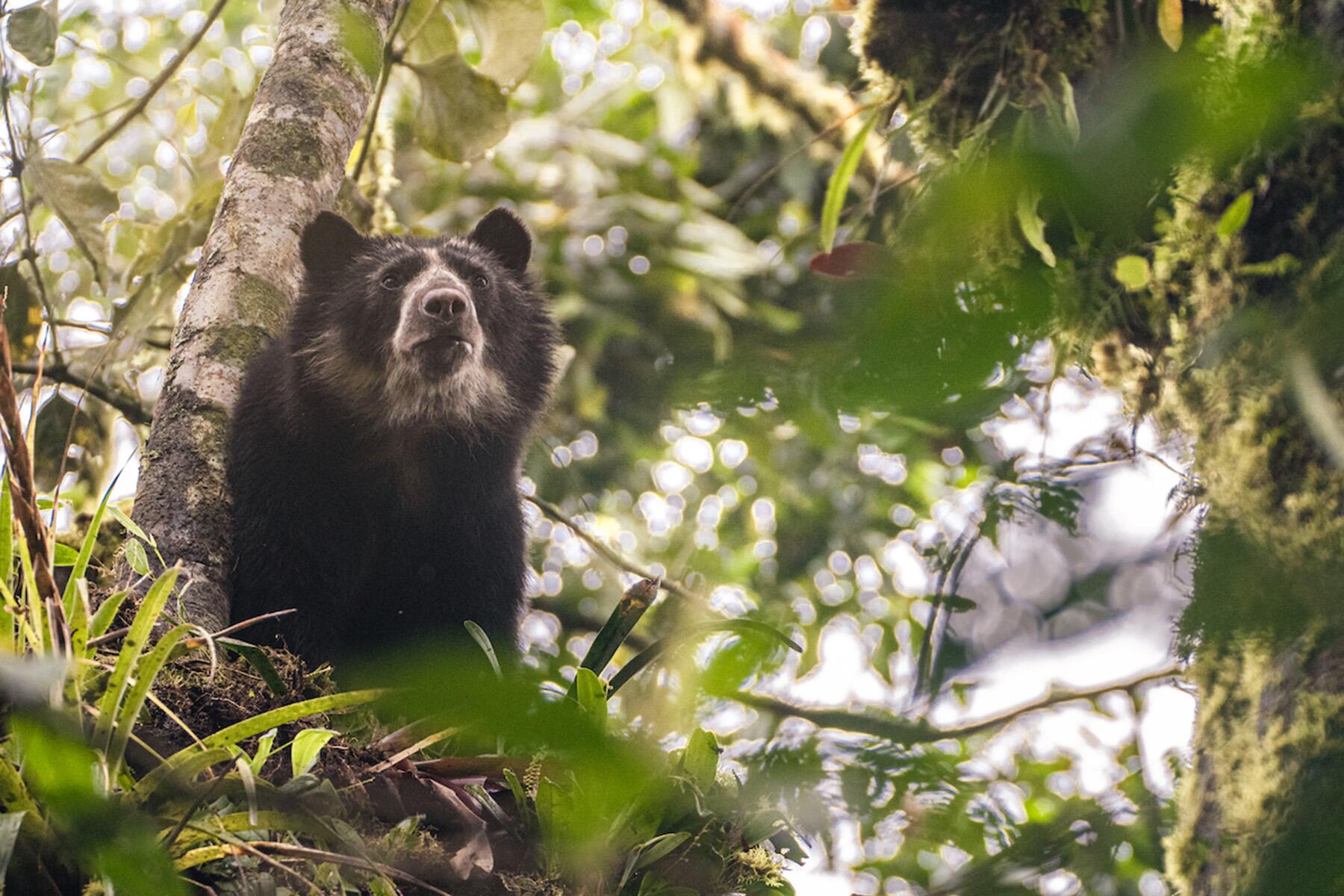The wild spectacled bear is on the verge of becoming endangered.
In the highlands of northern Ecuador, El Corredor del Oso Andino (The Andean Bear Corridor) is recognized by the country’s government as a protected area, and a means to ensure the migratory path of Andean bears known as spectacled bears. The only bear species in South America, spectacled bears, live on the slopes of the Andes Mountains, covering Venezuela, Colombia, Ecuador, Peru, and Bolivia.
The bear is mostly black in color, apart from its white or cream-colored facial markings around the eyes and nose, which give rise to the spectacled name. These docile and elusive creatures weigh up to 300 pounds, with females weighing around 150 pounds. Its diet consists primarily of plants and an occasional small animal, but it can hunt animals as large as an adult deer or llama.
In 1985, Rodrigo Ontaneda and Rebeca Justicia first visited the lush cloud forest northeast of Quito, the capital city of Ecuador. Spellbound by the biodiversity, Ontaneda and Justicia were devastated by the deforestation of tropical forests in the region and decided to set aside 100 hectares of land with the hope that their neighbors would follow suit.
Recommended Fodor’s Video
Three years later, when 45 land lots encompassing roughly 14,826 acres came up for sale, quick thinking and money-raising enabled the land purchase for what would become the Maquipucuna Reserve and Foundation. The Maquipucuna Reserve is home to the bear’s favorite “pacche tree” with its signature aguacatillos (a type of wild avocado that appears two months out of the year and is only found in this small region). During this time, there have been sightings of up to 20 different bears at a time enjoying a feast quietly in the treetops.
The Maquipucuna Reserve provides sustainable tourism offerings with a luxurious eco-lodge and camping accommodations. Activities like guided hikes through the cloud forest reserve allow visitors to spot diverse wildlife during feeding season, including birds and bears. After spending just one day in this biodiverse region, it is no surprise how Ontaneda and Justicia were inspired to protect this delicate environment.
“As long as the intact forest is worth more than the logged forests, then it is sustainable,” says Justicia, underscoring how local employment is a major driving force in the continued commitment to biodiversity.
For Ontaneda, Justicia, and the reserve workers, the goal is not only to preserve the forest but to empower neighboring towns and individuals to do the same through sustainable tourism. They also spearheaded the establishment of a wider conservation corridor strategy for the Chocó Andino biosphere region of northwestern Ecuador, with Maquipucuna Reserve at its nucleus—and it’s working.

The bear is considered both an umbrella and landscape species due to its vital role as a seed disperser, disruptor, and architect of forests. The presence of healthy bear communities indicates a significant area of clean and protected habitat. With a 20 to 25 years lifespan, some bears first observed in Maquipucuna as cubs have since returned as juveniles and adults. While not all bears return to the reserve, the foundation is working actively with regional communities on a camera-trap monitoring project to learn more about the migratory patterns and habits of these often-elusive animals.
Based on current trends, the Andean Bear is sadly estimated to become endangered by 2030. The work done by Ontaneda and Justicia, The Maquipucuna Reserve, and other active organizations across the Chocó Andino biosphere region is the best chance for this species to survive.
Protecting South America’s only bear is also about preserving a cultural connection to the animal. The spectacled bear has a deep-rooted importance in this region. Several local Indigenous people hold special myths and beliefs about the bears, including a Kichwa belief that dreaming of Andean bears means that the dreamer will meet a witch.

While the spectacled bear holds a place in legends, the myths surrounding it can also contribute to its endangerment. There is a belief that the bear’s fat has medicinal properties to cure tumors and burns. Certain Shuar peoples who utilize decorative elements of the bear continue to hunt the anima even though these practices are now illegal in Ecuador. With an estimated 5,000 to 30,000 bears left in the wild, it has never been more important to appreciate the spectacled bear and support efforts to protect this iconic animal.



